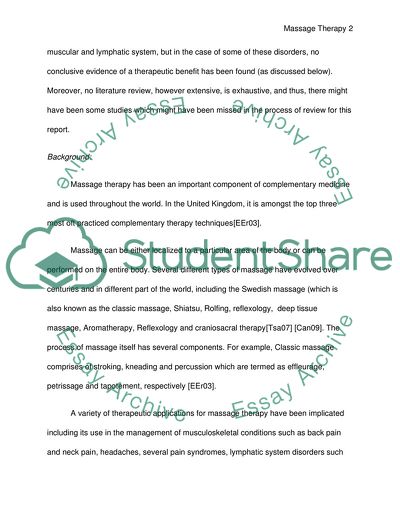Cite this document
(A Beneficial Role in Reducing Delayed Onset Muscle Soreness Research Paper, n.d.)
A Beneficial Role in Reducing Delayed Onset Muscle Soreness Research Paper. Retrieved from https://studentshare.org/health-sciences-medicine/1747305-a-study-of-the-effect-and-benefits-of-massage-therapy-on-the-muscular-and-lymphatic-systems-of-the-human-body
A Beneficial Role in Reducing Delayed Onset Muscle Soreness Research Paper. Retrieved from https://studentshare.org/health-sciences-medicine/1747305-a-study-of-the-effect-and-benefits-of-massage-therapy-on-the-muscular-and-lymphatic-systems-of-the-human-body
(A Beneficial Role in Reducing Delayed Onset Muscle Soreness Research Paper)
A Beneficial Role in Reducing Delayed Onset Muscle Soreness Research Paper. https://studentshare.org/health-sciences-medicine/1747305-a-study-of-the-effect-and-benefits-of-massage-therapy-on-the-muscular-and-lymphatic-systems-of-the-human-body.
A Beneficial Role in Reducing Delayed Onset Muscle Soreness Research Paper. https://studentshare.org/health-sciences-medicine/1747305-a-study-of-the-effect-and-benefits-of-massage-therapy-on-the-muscular-and-lymphatic-systems-of-the-human-body.
“A Beneficial Role in Reducing Delayed Onset Muscle Soreness Research Paper”, n.d. https://studentshare.org/health-sciences-medicine/1747305-a-study-of-the-effect-and-benefits-of-massage-therapy-on-the-muscular-and-lymphatic-systems-of-the-human-body.


